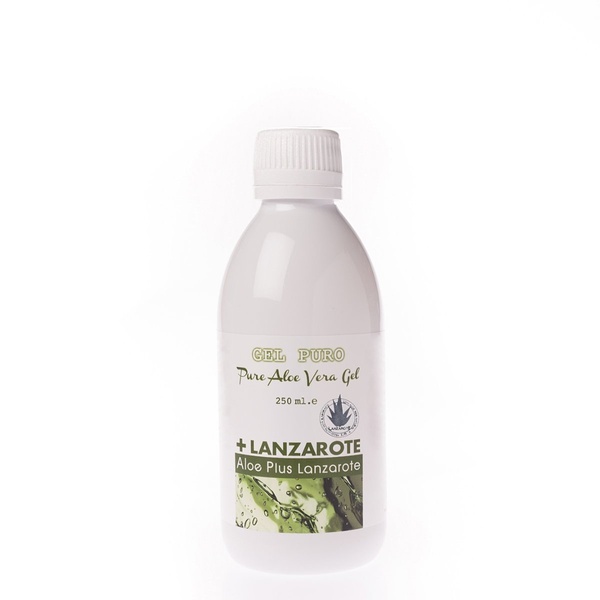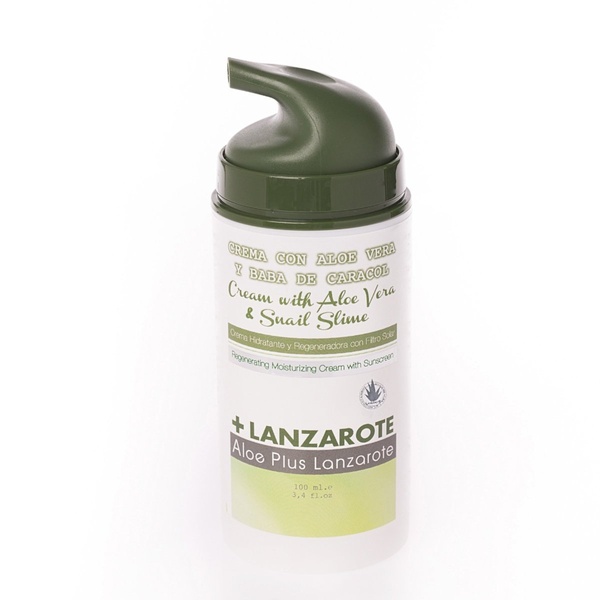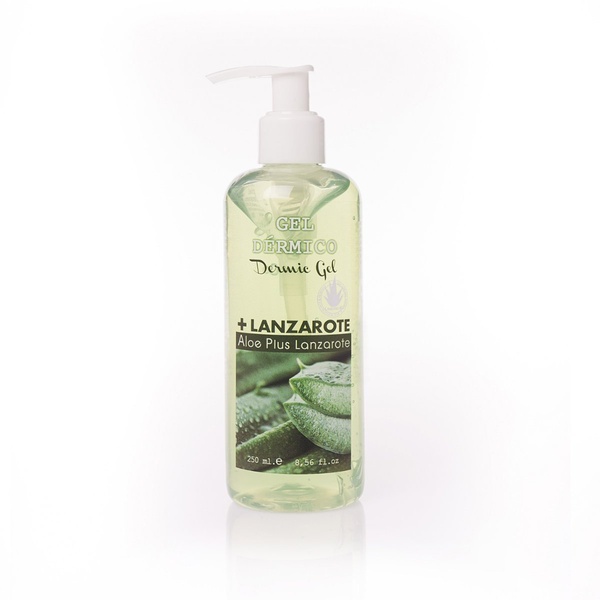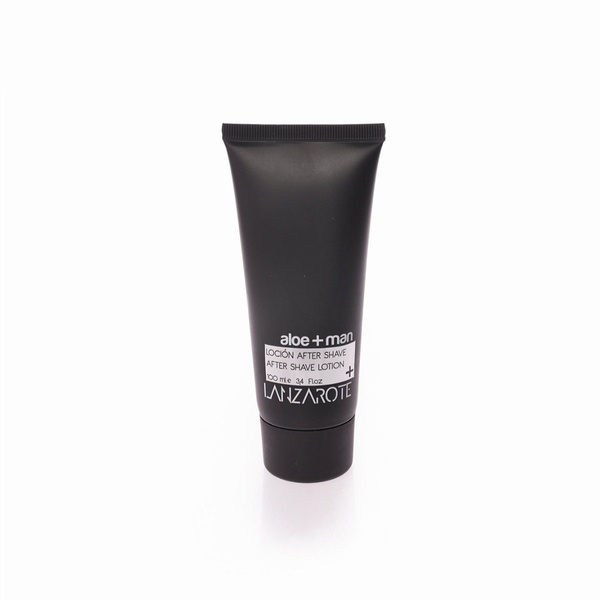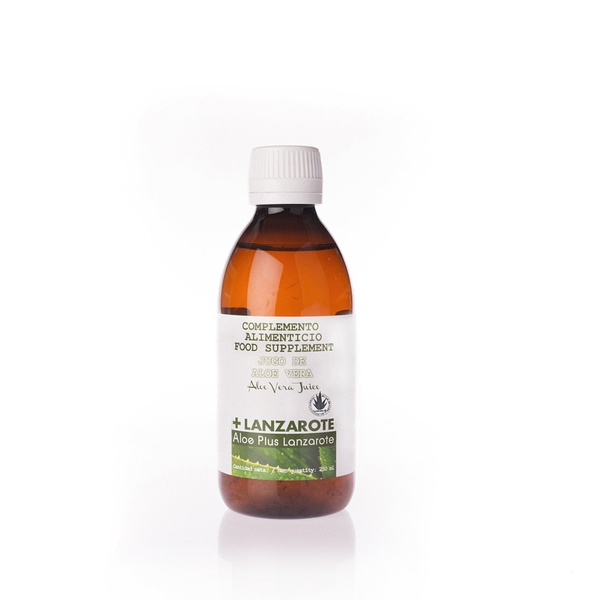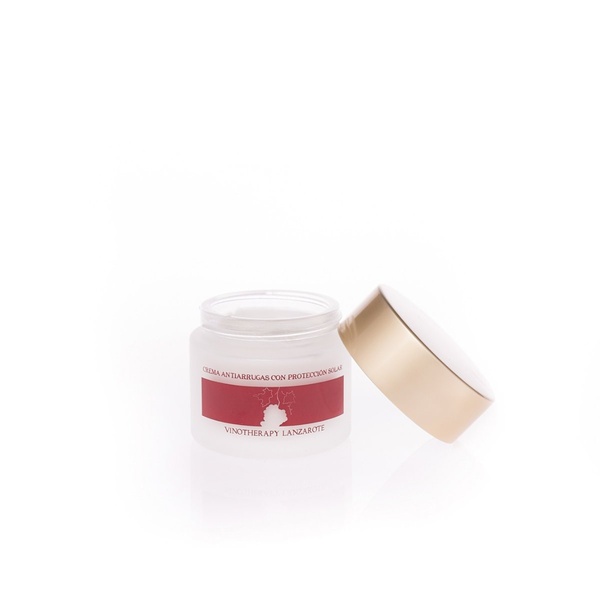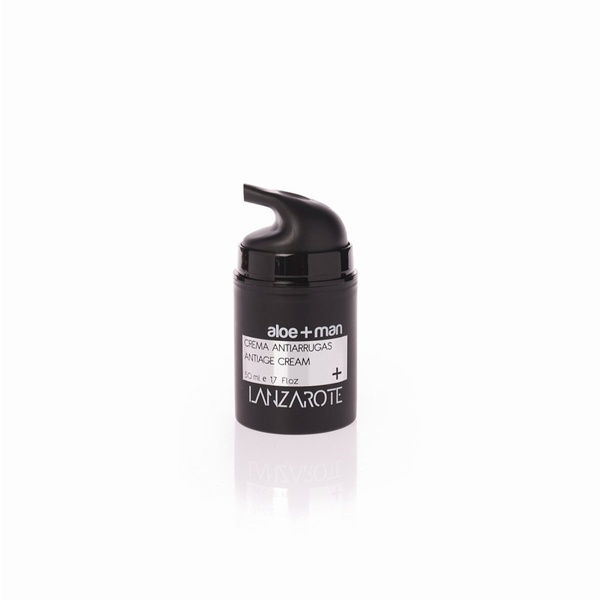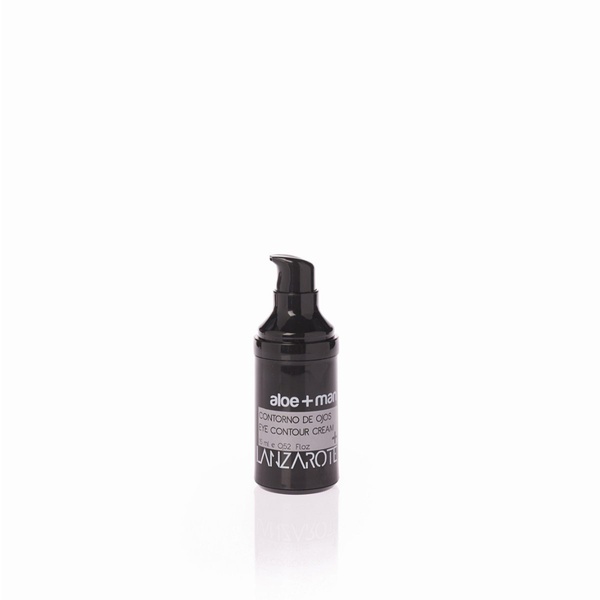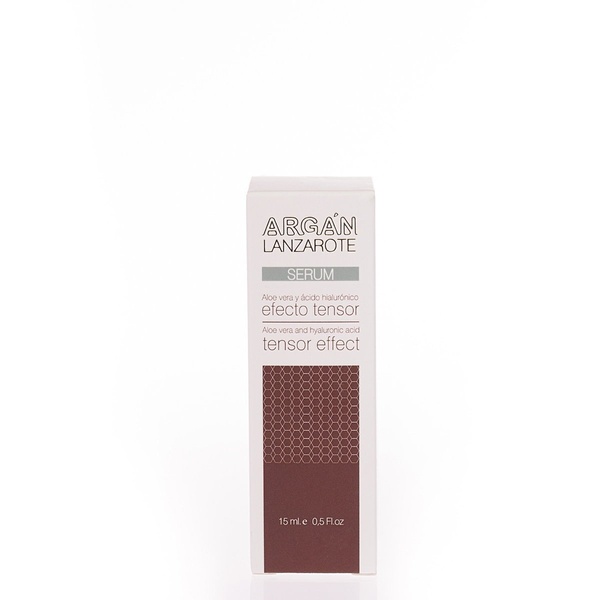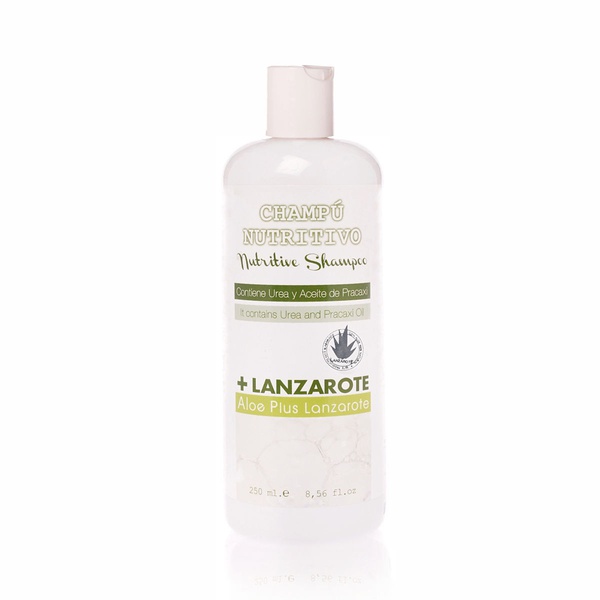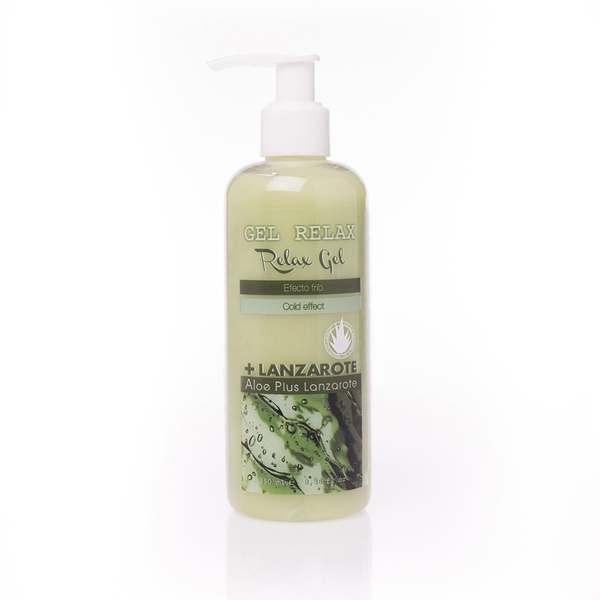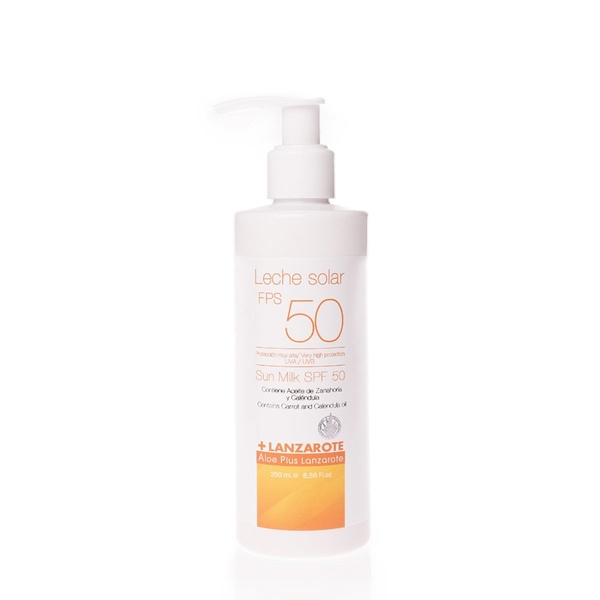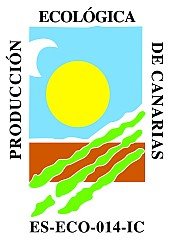PROPERTIES, USES AND THE HISTORY OF ALOE VERA
Table of Contents
- Information on aloe vera from the Canary Islands
- How do you cultivate aloe vera?
- Uses of Aloe Vera
- Composition of Aloe Vera
- Properties of Aloe Vera
-
Benefits of Aloe Vera
- Aloe Vera for acné
- Aloe vera for shaving and hair removal
- Aloe vera for mouth ulcers
- Aloe vera for anaemia
- Aloe vera for wrinkles
- Aloe vera for hypertension
- Aloe Vera for damaged hair and scalp problems
- Aloe Vera for tooth decay and other dental problems
- Aloe Vera for cellulite
- Aloe Vera for cuts, wounds and scars
- Aloe Vera for pain relief
- Aloe Vera for illness in children
- Aloe Vera for twists and sprains
- Aloe Vera for constipation
- Aloe Vera for stretch marks
- Aloe Vera for irritations and itching
- Aloe Vera for dark spots
- Aloe Vera for insect bites
- Aloe Vera for skin problems
- Aloe Vera for burns and stinging
- Aloe Vera for rheumatism and arthritis
- Aloe Vera for digestive disorders
- Aloe Vera for varicose veins
- Aloe Vera for allergy prevention
- Aloe Vera for sore throats
- Aloe Vera for diabetes
- Aloe Vera for headaches
- Aloe Vera for haemorrhoids
- Aloe Vera for cold sores
- Aloe Vera for infections
- Aloe Vera for osteoporosis
- Aloe Vera for athlete's foot
- Aloe Vera to revitalise tired feet
- Aloe Vera for psoriasis
- Aloe Vera for warts
Information on aloe vera from the Canary Islands
The aloe vera plant belongs to the Liliaceae family of plants and is native to northern and eastern Africa and the Arabian Peninsula.
Although there are various theories on whether aloe vera is also native to the Macronesian islands, most studies consider that the species was introduced to the Canary Islands, and its cultivation subsequently naturalised throughout the archipelago thanks to the weather conditions of the islands.
Many of its health benefits have been associated with acemannan, one of its main bioactive polysaccharides, which has been attributed immunomodulating, anti-microbial, anti-viral and anti-inflammatory properties, among other benefits.
However, its beneficial properties, composition and characteristics can be altered by varying factors such as the climate, the soil, post-harvest treatments, or the processing to which the plant is subjected.factores como el clima, el suelo, los tratamientos poscosecha o el procesamiento al que se somete la planta.
At Aloe Plus Lanzarote we know all about it, and we are dedicated to ensuring the quality of our raw materials.
On the volcanic island of Lanzarote (Canary Islands), the temperatures, the limited rainfall and significant wind all allow for exceptional development of the plant's internal properties. In fact, the Canary Islands have become the main region in Europe for the cultivation and production of aloe vera.
Our aloe leaf is also completely ecological, and is complemented by extremely careful treatment and processing of the aloe leaf itself. This is to ensure that we obtain high-quality raw material and guarantee the best health benefits for skin and overall well-being.
This is how, from our organic crops certified by the Canarian Institute of Agri-Food Quality, we obtain one of the best aloe vera plants in the world, the Canarian Aloe Barbadensis Miller. It is certified by the International Aloe Science Council (IASB), which is the most important international organization in the aloe sector and whose aim is to guarantee its high quality and purity.
How do you cultivate aloe vera?
There are many different species of aloe vera and not all have the same properties and uses. Aloe Barbadensis Miller is the species which is most widely studied and valued for its pharmacological and cosmetic properties.
It is a perennial plant, and its succulent aspects allow its successful adaptation to different climates. Cultivation in slightly acidic, fertile, deep soils, which are not prone to waterlogging, is ideal for the species to thrive.
The reproduction can be both sexual, by means of flowers, and asexual by means of shoots which are extracted from the mother plant and separated at the roots. Do you want to know how to transplant aloe vera? The little plants can be transplanted into holes 15 cm deep by 15 cm wide, completely covering its roots with damp soil up to the base of its leaves.
When it comes to , the plant requires:
- Stable temperatures between 19ºC and 25ºC, as it cannot withstand frost. Find out more about caring for aloe vera in winter.
- Water every 15 to 20 days when the soil is dry, avoiding waterlogging which can lead to rot at the roots.
- Abundant, direct natural light. For indoor plants, always place the pot close to light sources.
- We recommend using compost at the time of planting, and the removal of leaves in poor condition to support the development of the plant.
Once the plant is three years old, it reaches its maturity phase when its leaves have been optimally developed for the purposes of exploiting its properties. From this moment, direct use can be made of its leaves. To do this, harvest the leaves from the lowest part of the plants by making an incision at the end of the leaf base, and pulling it firmly in the opposite direction until it comes completely free from the stem.
To use the plant directly, we recommend extracting the leaf completely, and then only using the section needed at the time. Remove the thorny sides and the skin in order to extract the pulp from the inside. Before using the pulp, make sure you wash it with water to completely eliminate any of the aloe juice residue, as this substance can be toxic when used either internally or topically.
Uses of Aloe Vera
Many ancient civilisations such as Chinese, Hindu, Egyptian, Assyrian, Roman or Greek civilisations have used aloe vera for various medicinal purposes. This widespread use of aloe throughout history makes it one of the most therapeutic plants.
| Year 3000 BC | Pictorial representations adorn some graves and funeral monuments in Egypt. |
| Year 2700 BC | Drawings which represent the plant, attributed to a court painter, dating from the dynasty of the Chinese emperor Fu-Hsi. |
| Year 2100 BC | Clay tablets are found in Sumer describing the laxative properties of the plant. |
| Year 1800 BC | Aloe is referenced in the codices of the emperor Shennong and in some Babylonian tablets of the time. |
| Year 1550 BC | The Egyptian Book of Remedies is considered the first medical compendium that includes different formulas for elixirs using aloe juice. |
| Year 700 BC | In India, aloe is attributed curative properties for internal conditions related to the liver, digestive and respiratory systems; as well as external conditions such as burns, wounds, herpes and cuts. |
| 6th century BC |
Aloe is known in India as "the silent cure" and begins to be used to condition the hair and improve the appearance of skin. In China, aloe is considered one of the plants with the most therapeutic properties, and is presented as an effective remedy against a multitude of internal and external ailments |
| 5th century BC | Hippocrates alludes to aloe in his medical canon, highlighting its different applications, which becomes an early precedent for Modern Medicine. |
| 4th century BC | Theophrastus includes Aloe in his "De Causis Plantarum", expanding the applications originally indicated by Hippocrates. |
| 1st century BC | Dioscorides refers to Aloe in his "De materia medica" and places its origin in Africa. |
| Years 129 - 200 | Galen was the last great doctor of antiquity to mention aloe in his "De Constitutione Artis Medicae". |
| 8th century | The Arabs, aware of the virtues of aloe, dedicate themselves to cultivating large extensions of this plant and propagating its use. They are responsible for the spread of aloe throughout Europe. |
| 12th - 15th centuries |
During the final centuries of the Middle Ages, the medicinal value of aloe continues to be a key element of the work of different doctors, in particular those from al-Andalus. The cultivation of medicinal plants is documented, but the botany is not yet developed. At this time, Christopher Columbus finds that aloe was already used in some parts of the Americas. Where it had not yet arrived, the Spanish Jesuits introduce it through their settlements. |
| 15th century onwards |
During the Renaissance, aloe vera falls into disuse in Europe, having lost some of its fame as a healing plant with its virtues considered more of a myth than something real. This is largely due to the disappearance of Arab culture on the one hand, and, on the other, the use of aloe vera from tropical countries in powdered or leaf form across Europe. By the time they arrived in Europe, and due to differences in climate, the properties were largely diminished and the effect reduced. However, throughout the Mediterranean, the Americas and India, aloe vera continues to grow and its use is widespread. |
| 20th century | During World War II, the therapeutic value of aloe vera was rediscovered when it was applied to the wounds and burns to accelerate the healing of those affected by the bombs of Hiroshima and Nagasaki. |
Source: Aloe Vera Aloe Plus Lanzarote Manual.
"Therapeutic applications of Aloe vera" Cabuin et al, 2012.
"Aloe vera in the Canary Islands: botanical and ethnobotanical aspects" Wildpret de la Torre et al. Newsletter of the Friends of the Museum of Natural Sciences of Tenerife.
Composition of Aloe Vera
The aloe vera plant concentrates more than 200 biologically active substances, and it is the synergy created when they interact which provides much of its impressive medicinal and therapeutic value. This is why numerous studies and clinical trials have been conducted in order to determine the action of the active ingredients of aloe vera.
| Grupo | Compuestos | Propiedad y actividad | ||||||||
| Aminoácidos | Alanina, ácido aspártico. arginina. ácido glutámico, glicina, histidina, isoleucina, metionina, tirosina, fenilalanina, prolina, treonina, valina y lisina. | Compuestos orgánicos que se combinan para formar proteínas, necesarias para el funcionamiento de células y tejidos. Contiene 20 de los 22 que requiere el organismo, 7 de 8 esenciales. | ||||||||
| Enzimas | Oxidasa, amilasa, catalasa, lipasa, alinasa, carboxipeptidasa, fosfata alcalina, bradikinasa, superóiso dismutasa. | Posibilitan importantes reacciones químicas en el organismo: digestión de grasas y proteínas, actuar sobre la inflamación de los tejidos, favorecer la cicatrización y producir efecto analgésico. | ||||||||
| Compuestos Fenólicos |
|
Son laxantes naturales y potentes antibióticos, analgésicos y antivirales. | ||||||||
| Esteroles | Campestrol, colesterol, β-sitoesterol, lupeol. | Esteroides con poder antiinflamatorio y analgésico. | ||||||||
| Minerales | Calcio, magnesio, sodio, cobre, manganeso, zinc, hierro, potasio, cromo, fósforo y cloro. | Esenciales para una buena salud. | ||||||||
| Carbohidratos | Celulosa, glucosa, manosa, galactosa, arabinosa, aldopentosa, L-Ramnosa, Xilosa, glucomanosa, fructuosa, acemanano, sustancias péptidas. | Protegen las paredes estomacales y los intestinos, aumentan las defensas y mantienen hidratados los tejidos. | ||||||||
| Vitaminas | Betacaroteno, vitamina B1, vitamina B2, ácido fólico, vitamina C, vitamina B3, vitamina E, vitamina B6, colina. | Favorecen el crecimiento de tejidos, facilitan procesos metabólicos y neutralizan radicales libres. | ||||||||
| Otros compuestos |
|
|||||||||
Two products are obtained from Aloe Barbadensis Miller, the juice and the aloe gel. It is important not to confuse the two because they are very different from a chemical, pharmacological and therapeutic point of view.
- Aloe juice is a dark yellow-brown liquid with a bitter taste and a characteristic unpleasant odour. The juice is located between the skin and the aloe gel, and its active ingredients are hydroxyanthracene derivatives with a strong laxative effect.
- The aloe gel is made up of the mucilage obtained from the leaf pulp. It is primarily made up of polysaccharides, and is used for a wide variety of therapeutic purposes, mainly for skin issues.tuyentes son los polisacáridos y se emplea para una gran variedad de fines terapéuticos, principalmente en alteraciones de la piel.
All Aloe Plus Lanzarote products are made from the pulp which is extracted from inside the leaf, and do not contain hydroxyanthracene derivatives.
Properties of Aloe Vera
Different uses of aloe vera have emerged over time as a result of the traditional and intuitive knowledge from different cultures regarding this medicinal plant. Traditional uses of aloe vera have raised interest in scientifically demonstrating its effectiveness in different applications. The first scientific reviews on the use of aloe vera were the following:
| Year 1851 | Researchers Smith and Stenhouse managed to isolate a component with laxative properties, called aloin, which is the juice found between the skin and the pulp. |
| Year 1935 | Creston Collins and his son revealed the therapeutic potential of aloe in the treatment of diseases caused by nuclear radiation (radiodermatitis). |
| Year 1959 | The FDA (Food and Drug Administration) officially establishes the therapeutic properties of aloe. |
| Year 1970 | Bill Coats managed to stabilise the aloe pulp through a natural process, preserving its internal properties and adding vitamin C, vitamin E and sorbitol. This advance led to the development of a large industry associated with this plant. |
Traditionally, many properties have been attributed to aloe vera gel, with many considering it a detoxifying and anti-inflammatory agent, an immune system and cell growth stimulus, a support to digestive function, an antiseptic and painkiller, an accelerator of tissue regeneration, and, finally, a source of important vital active ingredients.
The most recent research has focused on demonstrating the biological activity of the plant's components, and their effect on different pathologies:
Anti-inflammatory properties of aloe vera
One of the most recognised benefits of the plant is aloe vera's anti-inflammatory property thanks to the large number of compounds which are present.
Burns, infections, allergies, and any invasion by external agents can trigger the activation of factors which cause inflammation in the body, and aloe vera has the ability to modulate these inflammatory processes thanks to the combination of actions of its pharmacological properties, such as antioxidant, immuno-stimulating, or healing and scarring properties for the skin. At the same time, it is able to reduce the symptoms that result from this process such as redness or swelling.
Immunomodulating properties of Aloe Vera
Although studies have shown the immunomodulating properties of aloe vera, most of these studies focus on the immunomodulating effects of the acemannan which is present in the gel. Acemannan is one of the main components of the polysaccharides within the plant, and according to research it is able to promote immunomodulating activity by increasing the sensitivity of macrophages by expanding the molecular expressive surface.
The action of the acemannan on the immune system is not only stimulating, but in certain physiological situations or where there has been exposure to certain physical, chemical or biological agents, it can also, along with the other elements of the aloe gel, prevent immunodepression.
Antioxidant properties of Aloe Vera
Aloe vera is a natural source of bioactive compounds with strong antioxidant activity. It is a strong source of essential micronutrients (minerals) and active phytochemicals (vitamins A, C and E), and total phenolic compounds which are able to reduce the free radicals which cause oxidation reactions associated with various diseases and conditions such as ageing, cardiovascular diseases, and more.
The antioxidant potential of aloe vera arises from the synergistic interaction of its bioactive compounds with the rest of the components which are present in the plant. Many experiments have also indicated that acemannan has purifying effects on free radicals, demonstrating that polysaccharides may work to inhibit the production of reactive oxygen (ROS), and therefore reducing the damage caused by oxidative stressa>. This is how the chelation and antioxidising activity of acemannan could be verified.
Climate conditions can also have a direct impact on the antioxidant capacity of the aloe. This directly affects the development of the plant as well as its phytochemical composition and the overall phenolic content. In semiarid areas, the aloe vera plant best develops its antioxidant capacities. As such, Lanzarote is the ideal place for both the cultivation and internal development of this medicinal plant.
Anti-microbial and anti-viral properties
The application of aloe vera gel has guaranteed bacteriostatic qualities (meaning that it prevents the reproduction of bacteria), bactericidal qualities (it destroys microorganisms) and antifungal properties (inhibits fungal growth).
This anti-microbial activity of aloe vera largely comes from the action of the anthracyclines present in the plant, which are able to inhibit the synthesis of bacterial proteins by containing the ribosome and therefore preventing its structural development. Scientific studies have supported the inhibition and susceptibility of aloe on colonies of Gram-positive and Gram-negative bacteria as well as fungi and yeast.
Different natural anthraquinones and similar compounds in the plant have also shown anti-viral effects for some infections such as herpes simplex, types 1 and 2. Similarly, it has been found that the aloemodin present works against a wide variety of viruses.
Aloe vera is also an effective bio-stimulatory agent, which, due to the ease with which it penetrates the skin's layers, provides a cleansing and antiseptic capacity for tissues and the capillary system. Specifically, there are 6 antiseptic factors found in the gel: lupeol, salicylic acid, ureic nitrogen, cinnamic acid, phenols and sulphur. Saponins, or soapy substances, also provide cleansing power for wounds.
Regenerative, scarring and protective properties for skin
Aloe vera is a natural scar promoter, thanks to its ability to increase cell proliferation, which is why it effectively and quickly heals wounds both in the mouth and on the skin, acting as a resistant and humid cover that promotes the cell migration required for the healing process.
The properties attributed to aloe in the skin are mainly related to its chemical composition and due to the individual characteristics of aloe gel.
The gel has a viscose consistency that makes it easier to apply to the skin and also has an astringent effect to help keep it clean and fresh. Aloe vera is an acidic substance (pH 4.5), which helps to fight against microorganisms. It easily penetrates the skin for easier absorption through all of the layers, largely thanks to the plant's lignins.
This capacity transforms it into a biological vehicle with pharmacologically active components that otherwise struggle to penetrate the skin's stratum corneum.
Hydration with aloe vera is another benefit of aloe vera for skin. In addition, aloe can prevent scarring from forming after an injury. It also increases skin elasticity and reduces roughness along with the depth and appearance of wrinkles.
Digestive system regulatory properties
The bioactive components of aloe vera have an anti-inflammatory effect, and help in the treatment of gastrointestinal diseases such as inflammation and gastric, duodenal, and intestinal ulcers.
Gastric diseases are common problems associated with inflammation and oxidative stress, which are conditions that occur when the mucous membrane is damaged or during periods of increased production of gastric juices. Studies have reported that aloe vera reduces intestinal inflammation and peptic ulcers due to the inhibition of the pepsin action and the secretion of gastric juices.
In addition, some studies support the prebiotic potential of aloe vera which has been defined as "a substrate that is selectively used by host microorganisms and confers benefits to health". The mucilage of aloe vera, rich in acemannan, could improve gastrointestinal health by increasing the short-chain fatty acids and modifying the bacterial composition.
Hypoglycaemic and hyperlipidaemic properties
Aloe vera supports the metabolism of lipids and carbohydrates, which helps maintain normal sugar levels. Aloe vera is also recommended to reduce cholesterol in the blood.
In a study conducted on diabetic patients who consumed aloe vera (100 g of aloe vera gel) twice a day for 5 years, it was observed that this treatment decreased levels of blood glucose, cholesterol, and triglycerides. In other studies with diabetic patients, aloe vera consumption (1 tbsp of aloe gel, twice daily, for 42 days) decreased blood glucose levels (2). Please check our recommendations on the use of aloe vera for cholesterol.
Benefits of Aloe Vera
Among the many benefits of aloe vera, we would like to highlight the following:
- Moisturises, soothes and regenerates the tissues of the skin.
- Has antiseptic, antibacterial and anti-inflammatory action.
- Helps to heal wounds.
- Has a cleansing effect on the skin (for acne).
- Strengthens the immune system.
- Can help digestive and gastric problems.
- Reduces cholesterol and blood pressure.
- Regulates blood sugar levels.
- Detoxifies the body.
- Strengthens the hair and regenerates the scalp.
Thanks to its many benefits, aloe vera has traditionally been used to treat different conditions, primarily related to the skin, and is considered as the best solution in certain situations.
Aloe vera for acné
The most popular use of Aloe Vera is for the treatment of acne. This ancient plant supports the regeneration of tissues from the inside out, absorbing excess fat caused by the blockage of the skin's pores.
It contains astringent and bacterial properties that eliminate excess oil, which also prevents the appearance of future spots and blackheads.
Aloe vera for shaving and hair removal
After shaving and hair removal, aloe vera provides a feeling of freshness and relief, but also helps the skin to heal faster, therefore helping to prevent rashes, bumps and redness.
-
17.48 €
-
3.69 €
Aloe vera for mouth ulcers
Mouth ulcers are caused by inflammation of the membranes of the mouth, and can cause great pain and discomfort. As such, the anti-inflammatory property of aloe helps alleviate the symptoms by acting on the palate, stomach and esophagus.
-
15.89 €
-
20.41 €
Aloe vera for anemia
Aloe vera considerably improves the blood formation process by increasing the concentration of haemoglobin in the blood. In addition, its high iron content also helps to counteract this deficit.
Aloe vera for wrinkles
Aloe vera is a classic remedy to prevent wrinkles, as it has a high protein content, stimulates the formation of fibroblastic cells (those which allow the existence of collagen), and increases the hydration of the skin.
Due to the lignin, aloe vera works with other ingredients to increase their effectiveness, as it acts as a vehicle to enable these active ingredients to penetrate the deepest layers of the skin.
Aloe vera for hypertension
Aloe vera is a natural hypotensive that acts as a blood purifier, promoting the oxygenation of tissues and regulating blood pressure.
-
15.89 €
-
20.41 €
Aloe vera for damaged hair and scalp problems
Aloe Vera should be a key ingredient in hair treatment products, as it contains more than 20 minerals and vitamins that can help to accelerate hair growth.
Benefits of aloe vera for the hair and scalp include:
- Sebum: Sebum is a moisturising substance that can hinder hair growth as it can smother hair pores when present in excess. Aloe vera reduces the presence of sebum as its antibacterial properties prevent it from accumulating.
- Alopecia and baldness: The properties of aloe vera allow the hair follicles to be rejuvenated, which helps to prevent baldness or alopecia.
- Dandruff: Very dry hair often produces dandruff. Aloe Vera helps to prevent dryness and also acts directly to treat dandruff.
- Moisturising: Aloe vera is ideal for nourishing the scalp due to the amount of minerals and vitamins it contains.
- Conditioner: Regular use of aloe vera can help recover the shine of dry hair.
- Accelerating hair growth: Aloe vera contains an enzyme that promotes hair growth, facilitating and improving the circulation of the scalp.
If you're interested in caring for your hair with aloe vera, don't miss out on our homemade masks containing aloe vera.
Aloe vera for tooth decay and other dental problems
Aloe vera is a good preventative measure for tooth decay, as its antimicrobial capacity helps to combat germs and bacteria that may emerge in the oral cavity, as well as contributing to good overall oral hygiene.
-
15.89 €
-
9.98 €
Aloe vera for cellulite
Aloe vera is perfect to reduce cellulite, as it has a purifying power that cleans and removes the toxins that cause it.
While aloe vera is recommended for cellulite, it is not an infallible remedy, as it must be combined with exercise, plenty of water, and a balanced diet.
-
15.89 €
-
20.41 €
-
Aloe vera for cuts, wounds and scars
Aloe vera is excellent at improving scarring over superficial wounds or cuts. The plant helps the cut to heal quickly and disappear almost without a trace. It also prevents infection in the wound, and reduces inflammation in the affected area.
It is also one of the best cell regenerators thanks to the presence of allantoin. Many of its properties have anti-inflammatory, disinfecting and moisturising effects.
Aloe vera for pain relief
Aloe vera can help mitigate certain muscle aches such as stiffness, cramps or nodule pains, particularly when these aches are the result of physical exercise or long hours spent sitting or standing.
-
ALOE VERA COLD RELAX GEL 250ml
27.45 € -
27.41 €
Aloe vera for illness in children
Due to its anti-inflammatory and regenerative properties, aloe vera can be a great ally when treating symptoms resulting from childhood diseases such as chickenpox, measles, nappy rash, and more. On the other hand, aloe vera can offer many benefits directly related to skin and hair in babies and children.
-
15.89 €
-
19.95 €
-
ALOE VERA PETIT BALM CREAM 100ml
17.53 €
Aloe vera for twists and sprains
Aloe vera can be of great help in the event of a twist or sprain, as its enzyme content has a strong sedative effect and can quickly and thoroughly penetrate the affected area.
-
ALOE VERA COLD RELAX GEL 250ml
27.45 € -
27.41 €
Aloe vera for constipation
Aloe vera is effective in combatting constipation as it supports the regularisation of the intestinal tract. It also helps to rebuild cells from the digestive system.
-
15.89 €
-
20.41 €
Aloe vera for stretch marks
Aloe vera is very effective against stretch marks, as it helps repair the skin's tissues and restore the skin's collagen that breaks down when stretch marks appear, thus improving the skin's condition and reducing the appearance of stretch marks.
Aloe vera for irritations and itching
Sometimes skin can string, or be itchy or irritated. This can be due to many factors, with the main culprits being dry skin, prolonged exposure to the sun, an allergic reaction, or mild dermatitis.
Aloe vera is an essential in these cases, as it intensively moisturises the damaged skin and promotes cell renewal, which relieves itching immediately.
-
15.89 €
-
19.95 €
-
ALOE VERA PETIT BALM CREAM 100ml
17.53 €
Aloe vera for dark spots
Dark spots on the skin can be caused by many factors. They can appear due to pregnancy or the use of contraception, in older people, with sun exposure after hair removal, and more.
Aloe vera is recommended in the treatment of these dark spots as it helps to clarify the skin by eliminating melanin, which is what causes these spots in the first place.
Aloe vera for insect bites
Aloe vera is very effective when used for stings as it immediately relieves inflammation and the itching produced by insect stings such as by mosquitoes or spiders.
Aloe vera for skin problems
Aloe vera's many properties make this plant the ideal natural solution to combat symptoms of various skin problems, such as irritation, dryness, itching, inflammation, rashes, redness, etc.
-
15.89 €
-
20.41 €
Aloe vera for burns and stinging
Aloe vera is used to treat small sunburns or other types of burns such as those caused by splashing oil or radiotherapy. It helps to soothe the pain, prevents infection, and can help to limit scarring..
Although not serious injuries, controlling such burns can help to reduce the chance of infection and the possibility that they leave a mark on the skin.
-
19.95 €
-
ALOE VERA SUNSCREEN SPF50 250ml
27.41 € -
17.48 €
Aloe vera for rheumatism and arthritis
Arthritis is an inflammation that affects the joints, causing stiffness and intense pain that also limits the freedom of movement. Aloe vera is effective against arthritis thanks to the acetylsalicylic acid it contains which acts as an analgesic and reduces inflammation.
Rheumatism, like arthritis, is an inflammatory disorder, but in this case it affects the soft tissues, ligaments, tendons and muscles which surround the joints. One of our Aloe Plus Lanzarote products is Cold Relax Gel, an aloe vera gel which is perfect for joints, as it offers a feeling of relief when suffering from muscle fatigue or cramps.
Aloe vera for digestive disorders
Aloe vera is an ideal treatment to help reduce, or even eliminate, stomach pain and inflammation. This is possible thanks to the enzymes and polysaccharides present in this plant. Below, you will find some of the benefits of Aloe Vera for digestive problems:
- Stomach tonic to help with heavy digestion, improvements in intestinal transit, acidity regulation, and gastric problems in general.
- Standardisation of pH.
- Promotes the balance of gastrointestinal bacteria.
- Regeneration of the mucous membranes.
- Reduces stomach and oesophageal irritations.
-
15.89 €
-
20.41 €
Aloe vera for varicose veins
The use of Aloe Vera to treat varicose veins in the legs is one of the best natural remedies, as it revitalises circulation and reduces the swelling.
Many of the traditional therapeutic applications of aloe vera have been confirmed by science. However, not all have been certified and some have not passed modern methods of analysis and experimentation.
Aloe vera for allergy prevention
Aloe vera works as a potent immune system stimulator, and as such it can prevent the effects of allergies, such as sneezing and irritation of the nose or eyes. It does this by strengthening the body so that allergic reactions do not appear or are reduced.
Aloe vera for sore throats
Sore throats are often caused by inflammation and infection of the tonsils
Aloe vera has bactericidal and anti-inflammatory properties that help to eliminate microorganisms and relieve a sore throat, enabling saliva and food to pass. To combat tonsil pain (tonsillitis), we recommend taking our Aloe Vera capsules.
Aloe vera for diabetes
The high vitamin C content, along with the antioxidant and anthracycline components, work to reduce blood sugar levels and stimulate insulin production which can help to restore its natural balance. You can read more about the role of aloe vera as an ally against diabetes on our blog.
Aloe vera for headaches
The plant's properties can help to relieve headaches with the Pure Aloe Vera. Apply it to the area which is sore using a gauze soaked with the product.
Aloe vera for haemorrhoids
Aloe vera is a good anti-inflammatory, soothing and regenerating agent that immediately relieves irritation and itching. The application of the pure Aloe Vera Gel is recommended for both internal or external haemorrhoids. It is important to note that the treatment must be consistent for the haemorrhoids to disappear.
Aloe vera for cold sores
When cold sores rear their head, apply aloe vera to quickly dry them out so that they heal quickly. We can do this using the Aloe Vera Pure Gel or, if the cold sore is small, with the Aloe Lip Balm.
Aloe vera for infections
Aloe vera plants or products with a high aloe content are recommended for infections, particularly for vaginal infections. Pure Aloe Vera gel is ideal in these cases, as it contains almost 100% aloe vera.
Aloe vera for osteoporosis
The disease, which is caused by a reduction in bone tissue, decreases the resistance of the locomotive system, making it more fragile. Aloe is ideal for relieving osteoporosis because it acts to regenerate bone mass, helping to absorb greater amounts of calcium and providing essential vitamins. Aloe Vera Juice must be ingested consistently to treat this condition.
Aloe vera for athlete's foot
Athlete's foot is caused by the appearance of fungi on the foot, and aloe is one of the best natural remedies to treat the problem.
Aloe vera to revitalise tired feet
In our day-to-day lives, our feet can really feel the strain. Walking a lot or spending a lot of time on our feet are key examples. The Aloe Vera Cold Relax Gel is ideal to eliminate this pain due to its revitalising effect.
Aloe vera for psoriasis
Aloe vera gel is key for combating psoriasis and rashes, as it has an acetylsalicylic acid content that supports its penetration into the skin, creating a moisturising and emollient effect. It also acts within the renal system by diluting toxins and helping to eliminate them. The plant also works to regenerate the cells, and the application of aloe rich creams help to mitigate psoriasis outbreaks. Find out more about the benefits of aloe vera to treat psoriasis.
Aloe vera for warts
Aloe vera is good for treating warts, which are the result of the appearance of a viral infection that can lead to itching. The aloe plant helps to naturally remove them, as it has properties with fungicidal, astringent and antibacterial effects, helping to reduce the size of warts until they disappear.
Sources:
- Therapeutic applications of Aloe vera" Ruiz Caubin, A.F.: Ruiz Caballero, J.A.; Brito Ojeda, E.Mª, Navarro García, R. Department of Physical Education and Medical Science and Surgery. Insular University Hospital of Gran Canaria. University of Las Palmas de Gran Canaria. Medicine and surgery, Canary Islands. January - April 2012.
- "Beneficial effects of Aloe on health" article published in "Vertientes", a magazine specialised in Health Sciences (14(2):53-73, Calderón-Oliver M. Quiñones Peña, Mª.P., Pedraza-Chaverri, J., 2011."
- "Aloe gel" article published in Phytotherapy magazine 1 (4): 245-256, Vila Casanovas, R., Guinea López, Mª., 2001.
- Source: Extraction, purification, structural characteristics, biological activities and pharmacological applications of the acemannan, a polysaccharide in aloe vera: a review. Chang Liu,1,2. Yan Cui,3. Fuwei Pi,1,2. Yuliang Cheng,1,2. Yahui Guo,1,2,*. He Qian,1,2,*.
- “Aloe vera and its therapeutic application in chronic inflammatory periodontal disease” Dr. Odalys Díaz López, Dr. C. Bárbara Toledo Pimentel, Dr. Midiala Veloz Fariñas, Lic. Ivia Posada López, Est. Anabell Navas Toledo University of Medical Sciences of Villa Clara. Villa Clara, Cuba.
- "Applicability of Aloe Vera on wounds, burns, and ulcers: bibliographic review". Zafra Ramírez, Javier. Final university project of the Faculty of Health Sciences. Department of Nursing at the University of Jaén, Spain.
Sources: Extraction, purification, structural characteristics, biological activities and pharmacological applications of the acemannan, a polysaccharide in aloe vera: a review. The aloe vera sector in the Canary Islands: international competitiveness and future scenarios. Phytotherapy magazine 2001; 1 (4): 245-256 "Aloe gel" Roser Vila and María Guinea
Sources: "Therapeutic applications of Aloe vera" Cabuin et al, 2012.



